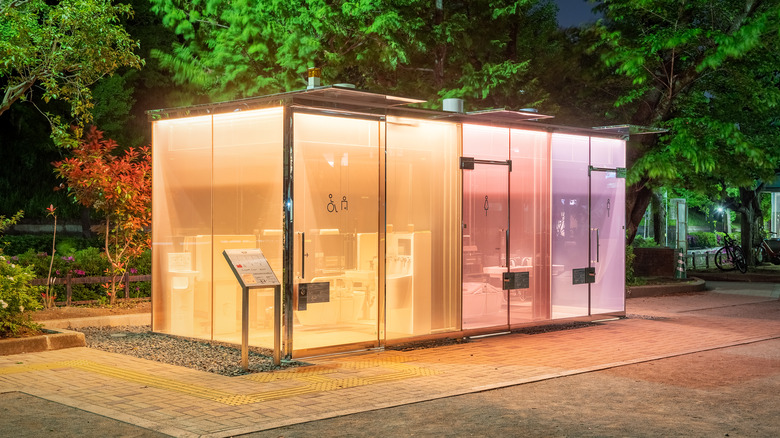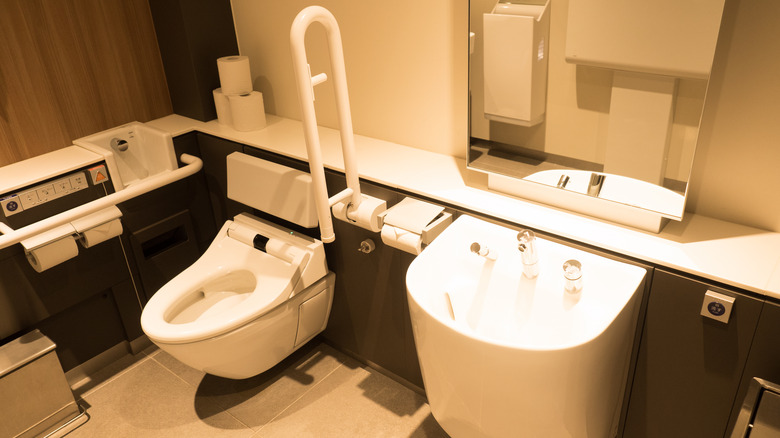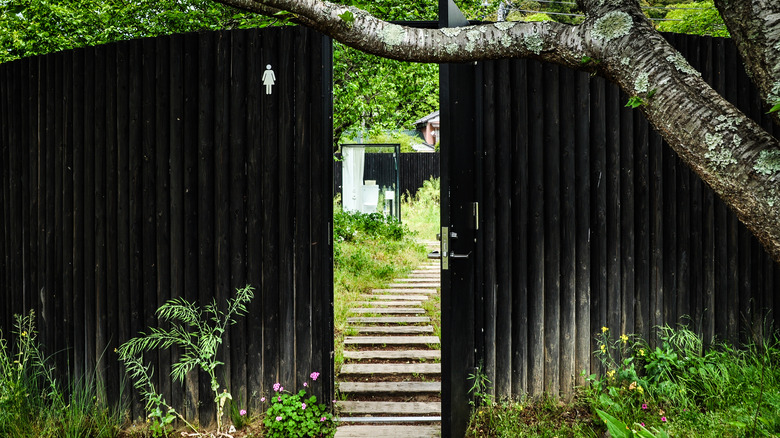Why Rick Steves Loves This Country's One-Of-A-Kind Toilets So Much
The unexpected information about toilets in Europe — the continent travel writer and TV host Rick Steves is a bona fide expert — confirms they aren't always the most pleasant. Some are tricky to flush, others don't include toilet paper, and often, you have to pay to use them. So imagine Steves' delight when he visited Japan and experienced the one-of-a-kind restrooms in the Land of the Rising Sun. Though the globe-trotter devotes most of his website to European travel tips and itineraries, he made an exception in one blog post to rave about Japanese toilets. Steves writes that he visited the East Asian country during winter many years ago and still distinctly remembers a middle-of-the-night trip to the restroom at his ryokan (a traditional Japanese inn).
"The rocks in the Zen garden were covered by snow. There was no central heating. I could see my breath," he recalls. Still, he braved the cold and walked to the communal restroom to find the toilet. Steves continues: "Pulling down my pants, I sat slowly...dreading the chill of the seat. It was heated — one of the most delightful surprises I've experienced over a lifetime of travels, the memory of which I still cherish. And before I made any noise, a playful trickle of water played a soundtrack designed to mask any noise I might make." Who knew something so mundane could be so luxurious?
Take a time-out in Japan's restrooms
Rick Steves may have discovered Japanese toilets several years ago, but today, restrooms in Japan continue to wow travelers from all over the world. In 2016, a couple visiting Nagoya from China even tried stealing the pricey toilet seat from their hotel room. We don't suggest committing theft but recommend getting acquainted with the high-tech toilets — this is an essential travel hack when visiting Japan. After all, they're free to use and easy to find in most train stations, shopping centers, and convenience stores (though the latter may be the least clean and might require you to make a purchase first).
Steves noted that Japanese toilet seats are typically heated, particularly in winter. If you're wary of sitting directly on the seat due to hygiene concerns, look for a sanitizer dispenser on the wall next to the toilet. Spritz the sanitizer on some toilet paper and wipe the seat before sitting down. Once seated, you might hear the sound of flushing coming from a nearby speaker. As Steves explained, this is meant to mask any embarrassing noises, offering a sense of privacy.
You'll likely find buttons for several other features, such as bidet functions and a deodorizer. Note that Japanese toilet panels don't always come with English labels, so follow the picture icons or use your phone to translate. And whatever you do, don't accidentally press the emergency button.
Some restrooms double as artwork
Futuristic toilets are available across Japan, but some lead the pack with artistic designs and extra special facilities. There's perhaps no better place to explore the country's unique restrooms than in Shibuya, Tokyo (Coincidentally, Shibuya is the ideal spot for traveling with kids in Tokyo). That's where you'll find over a dozen public toilet structures artistically redesigned as part of the Tokyo Toilet project. Among the most fascinating are the designs at Haru-no-Ogawa Community Park and Yoyogi Fukamachi Mini Park. You'll find a tri-colored, transparent glass building at each site that turns opaque once a visitor locks the door.
Outside of Tokyo are countless other creative toilets and restrooms. For instance, the toilet stalls at Madarao Kogen ski resort in Nagano feature a 360-degree optical illusion of a ski jump. Meanwhile, Chiba's Itabu Station is home to the Toilet in Nature, a glass cubicle nestled right in the middle of a green pasture (note that the facility is only open to women).
Take some time to check out the toilets in popular restaurants and attractions. Often, the designs found in the main rooms extend into the restrooms. However, note that in older and more traditional establishments, you might discover old-school squat toilets (which are, essentially, a no-frills hole in the ground). While these might not offer the modern experience Rick Steves fell in love with, they're a part of quintessential Japanese culture.


